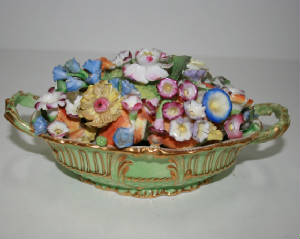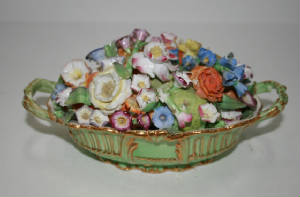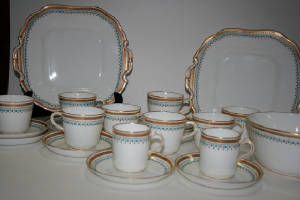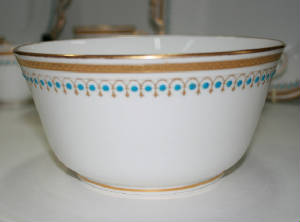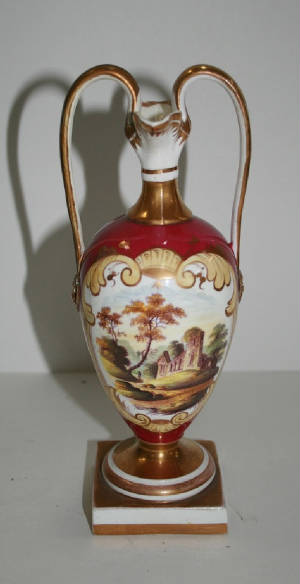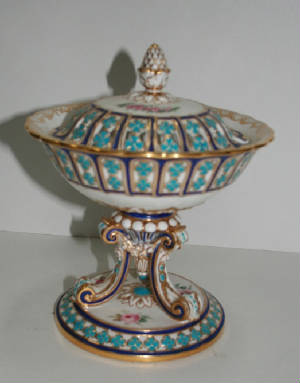|
Lower Lodge Antiques, Natchez, MS
Minton
|
|
Minton Thomas Minton started like many others making earthenware.
He started porcelain production around 1797. The earliest Minton porcelain's were tea wares, which were only
marked with a pattern number, some wares used floral designs similar to New Hall. From about 1805 Minton stared to use a factory mark similar to the Sevres
mark. This mark was used until around 1816 when production of porcelain stopped. Minton resumed porcelain production in 1824, using a whiter bone-china body and the
potting became thinner. Minton also made a large
range of ornamental ware, included floral encrusted vases often with a Dresden style crossed sword mark. These are often
incorrectly identified as Coalbrookdale/Coalport. The Minton pattern books are useful to prove otherwise. Minton is well known for its Parian Figures produced in the 1840's In 1836 Herbert Minton succeeded his father and produced wares
in the Sevres taste. Many pieces by Minton were strongly influenced by Sevres but Minton no longer used faked Sevres
marks. Minton by now had a truly international reputation and employed a French Art director and many French artists. From 1873 the mark changed to Mintons and an impressed date mark
was used. Minton also continued to produce fine
earthenwares, including Majolica which it introduced in 1850. |
||||||||||
|
|
|||||||||||||||||
